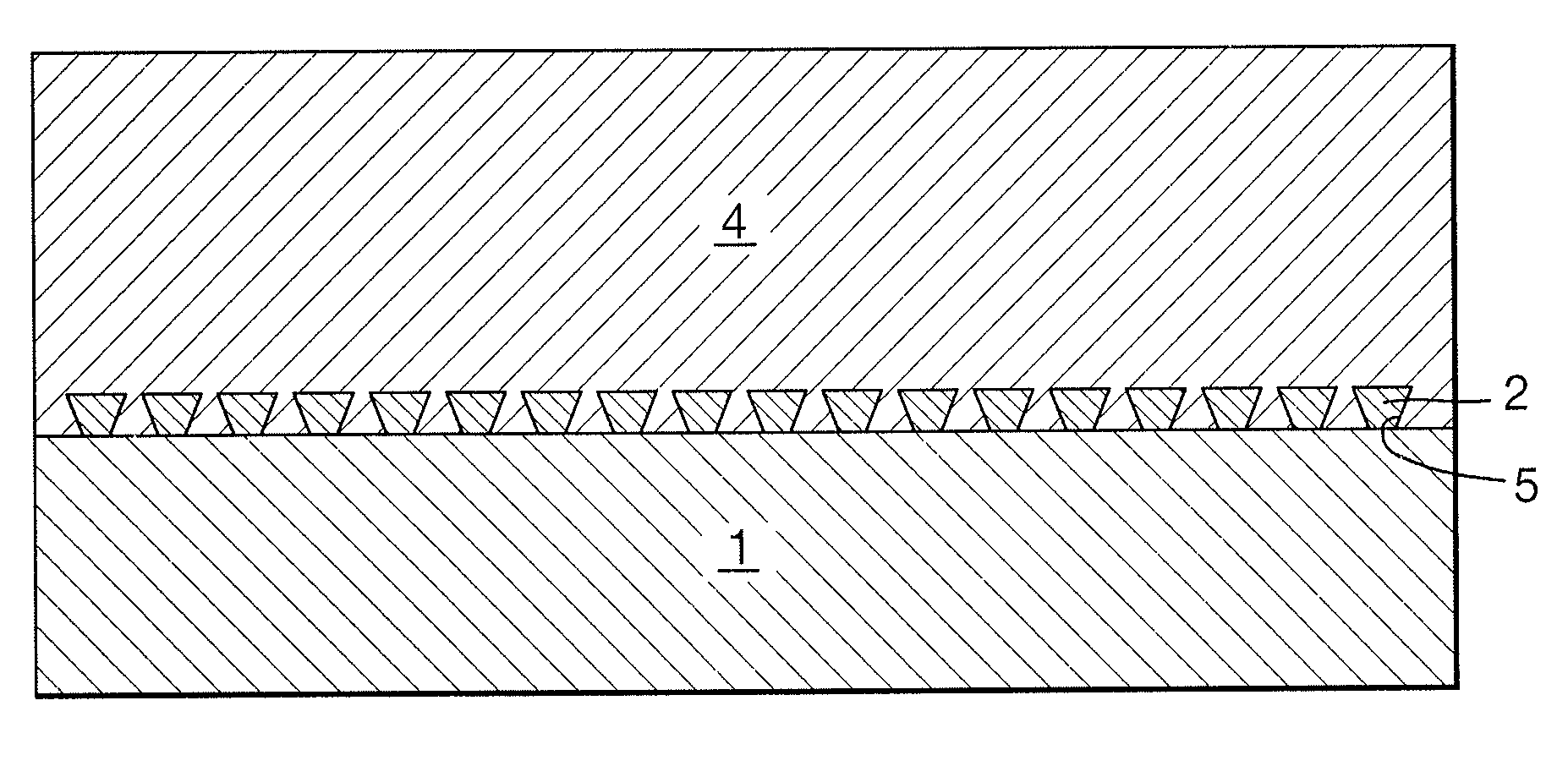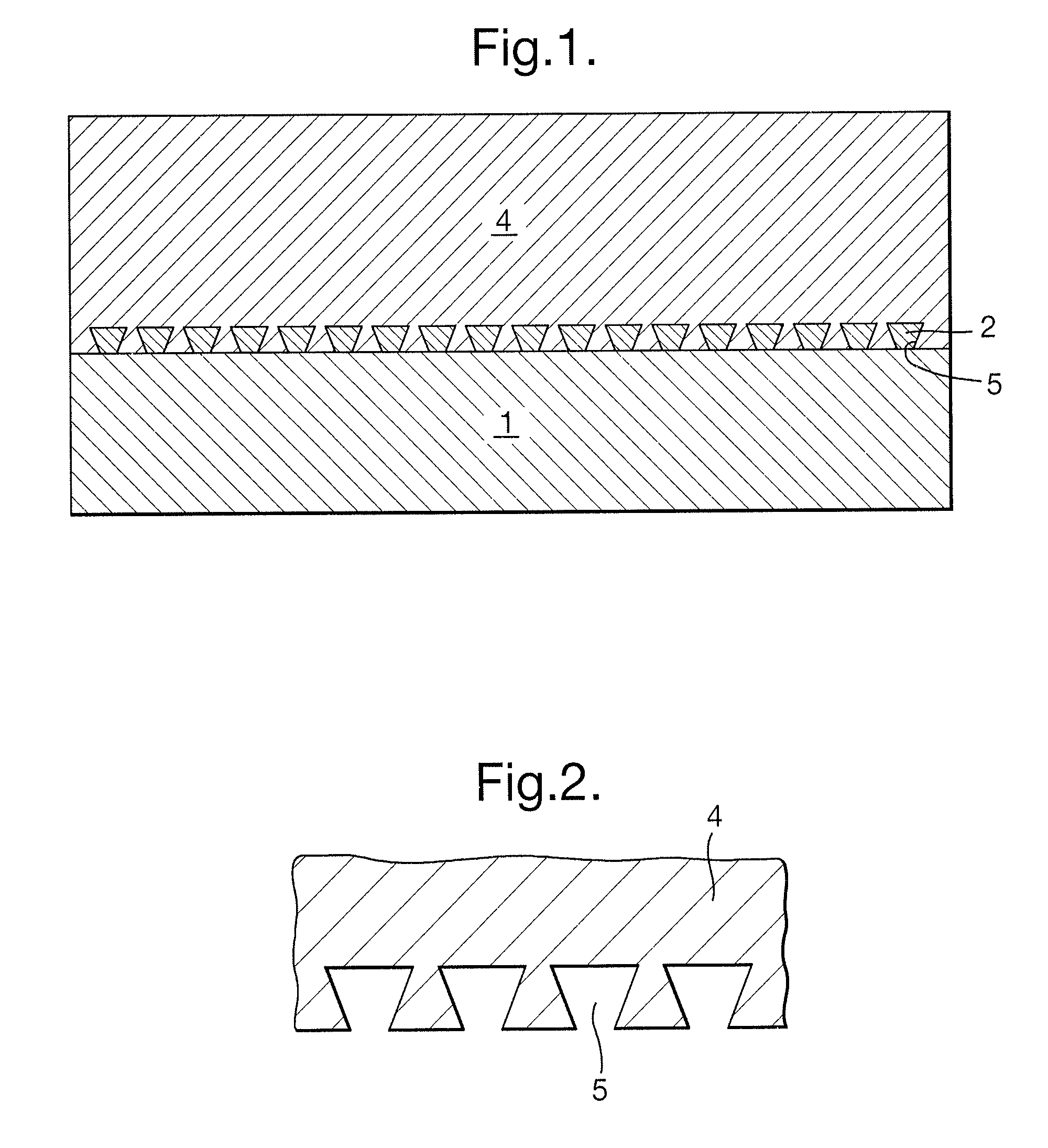Mould lining
a technology of moulding and linings, applied in the field of moulding linings, can solve the problems of parts failing, current surface preparations cannot easily produce tiny re-entrants, etc., and achieve the effect of hard bonding and easy production
- Summary
- Abstract
- Description
- Claims
- Application Information
AI Technical Summary
Benefits of technology
Problems solved by technology
Method used
Image
Examples
Embodiment Construction
[0008]As indicated above, the nature of powdered metallurgy moulding particularly in relation to titanium powders utilised to form components and parts results in a surface which is overly smooth and therefore has no re-entrant features into which adhesive can flow in order to lock titanium with other materials such as a composite substrate. In accordance with aspects of the present invention such surface texturing to provide re-entrant features in a moulded material is achieved through providing surface discontinuities in a mould lining located within a mould to be utilised to form components.
[0009]The material from which the mould lining is formed will depend upon subsequent processing. As indicated, with regard to titanium powder it is known to utilise steel as the mould such that, in accordance with aspects of the present invention, the mould lining may similarly be formed from a thin layer of steel, which is formable enough to be applied to the inner surface of the mould.
[0010]...
PUM
| Property | Measurement | Unit |
|---|---|---|
| surface topography | aaaaa | aaaaa |
| surface | aaaaa | aaaaa |
| thickness | aaaaa | aaaaa |
Abstract
Description
Claims
Application Information
 Login to View More
Login to View More - R&D
- Intellectual Property
- Life Sciences
- Materials
- Tech Scout
- Unparalleled Data Quality
- Higher Quality Content
- 60% Fewer Hallucinations
Browse by: Latest US Patents, China's latest patents, Technical Efficacy Thesaurus, Application Domain, Technology Topic, Popular Technical Reports.
© 2025 PatSnap. All rights reserved.Legal|Privacy policy|Modern Slavery Act Transparency Statement|Sitemap|About US| Contact US: help@patsnap.com


